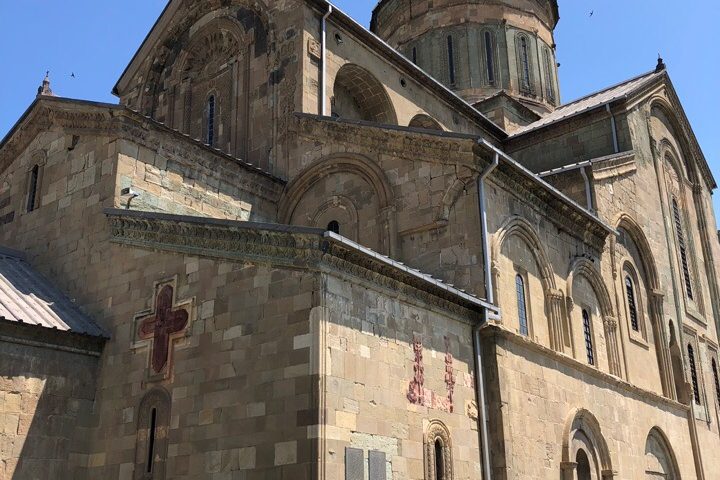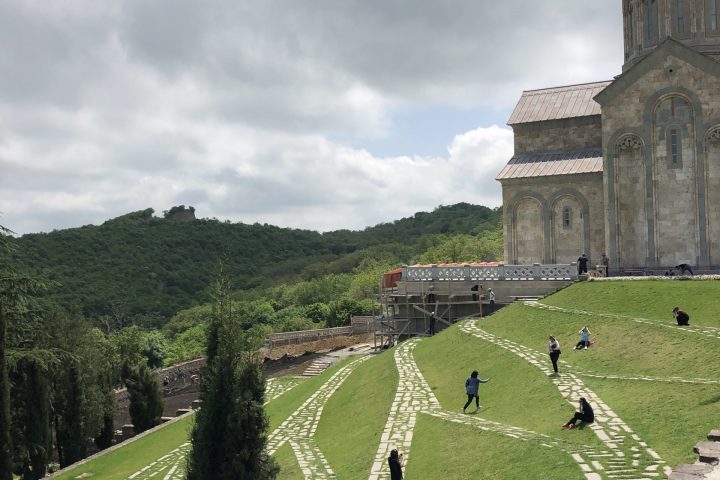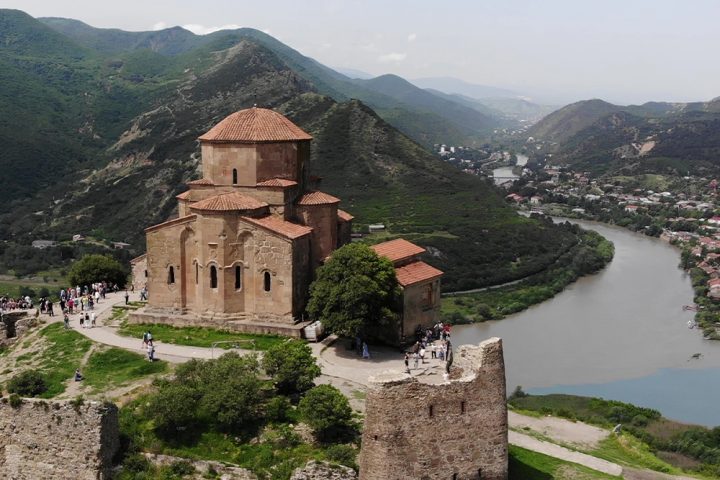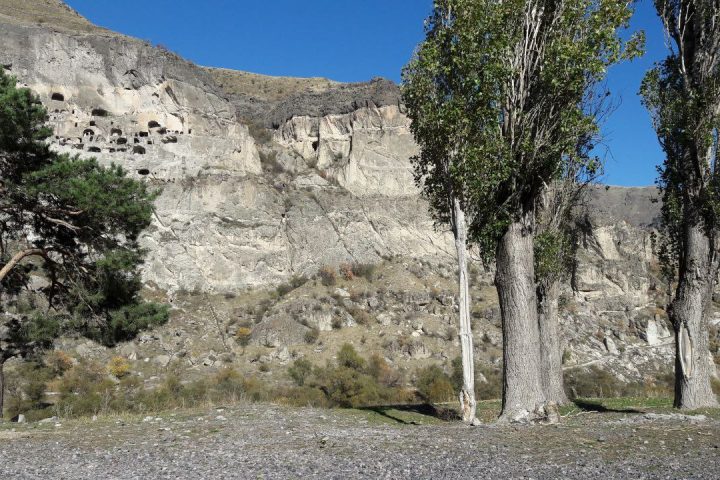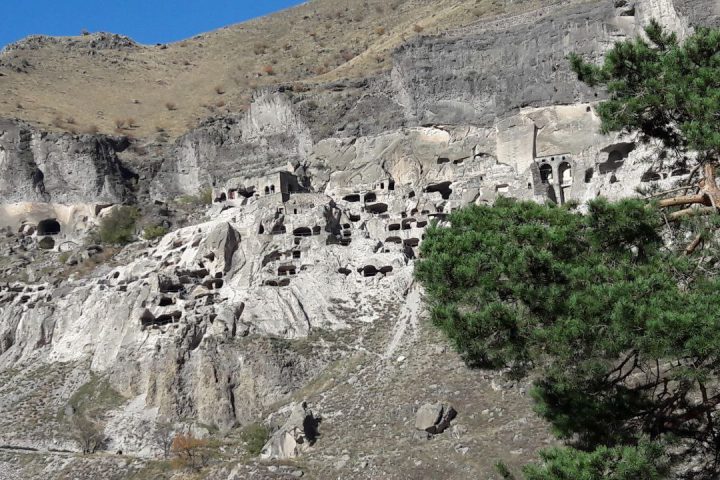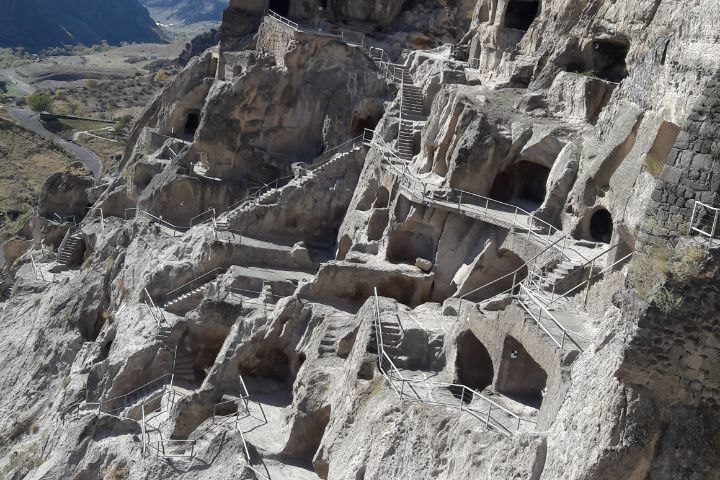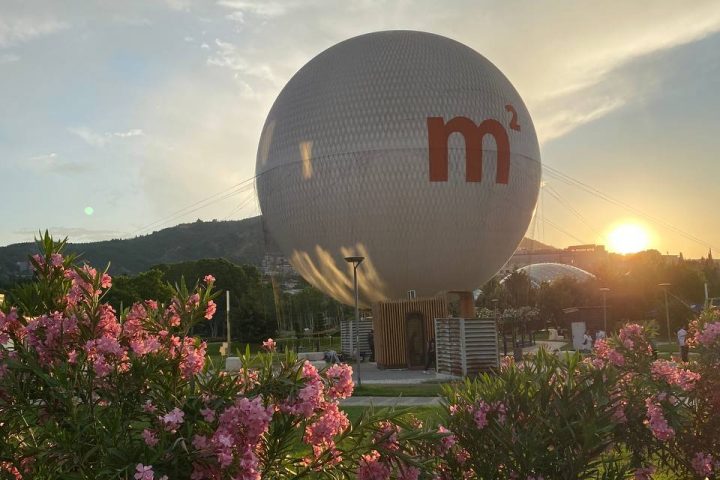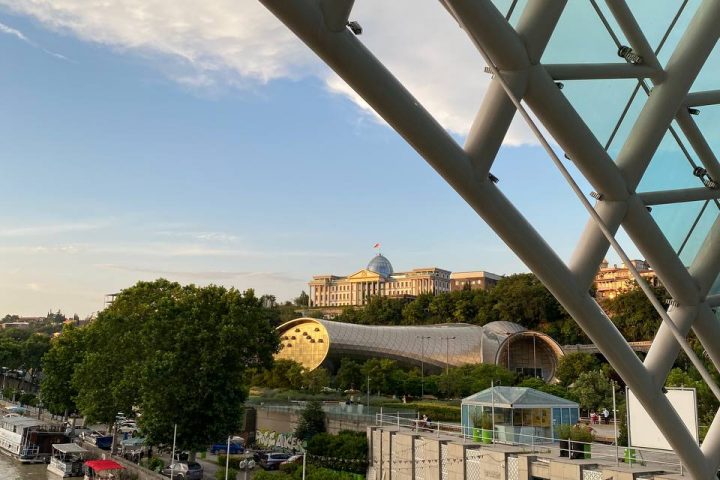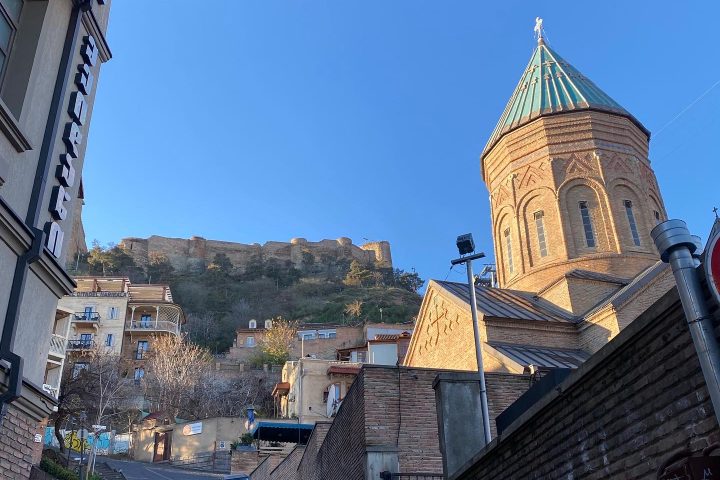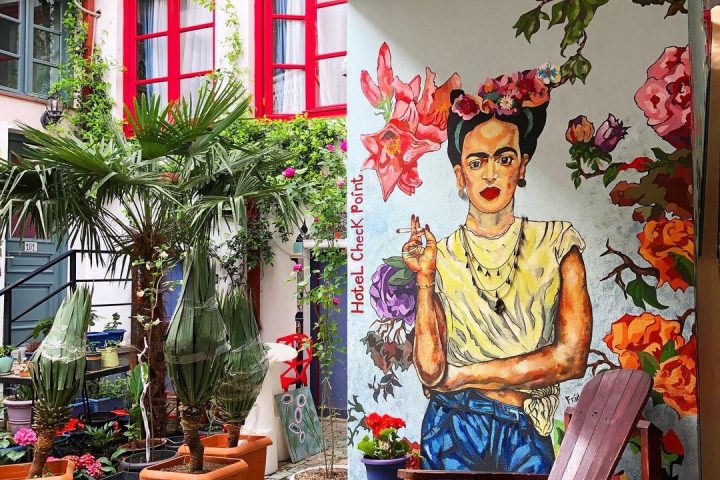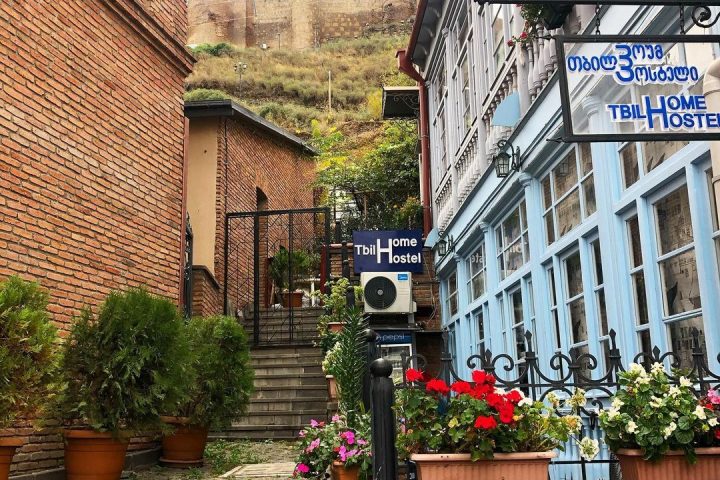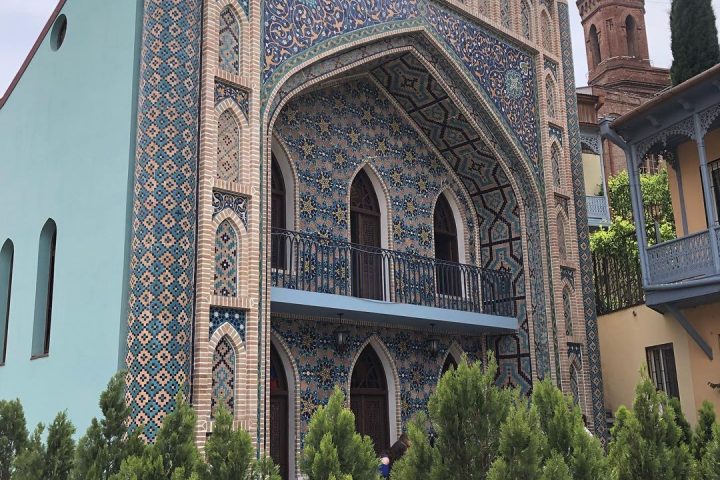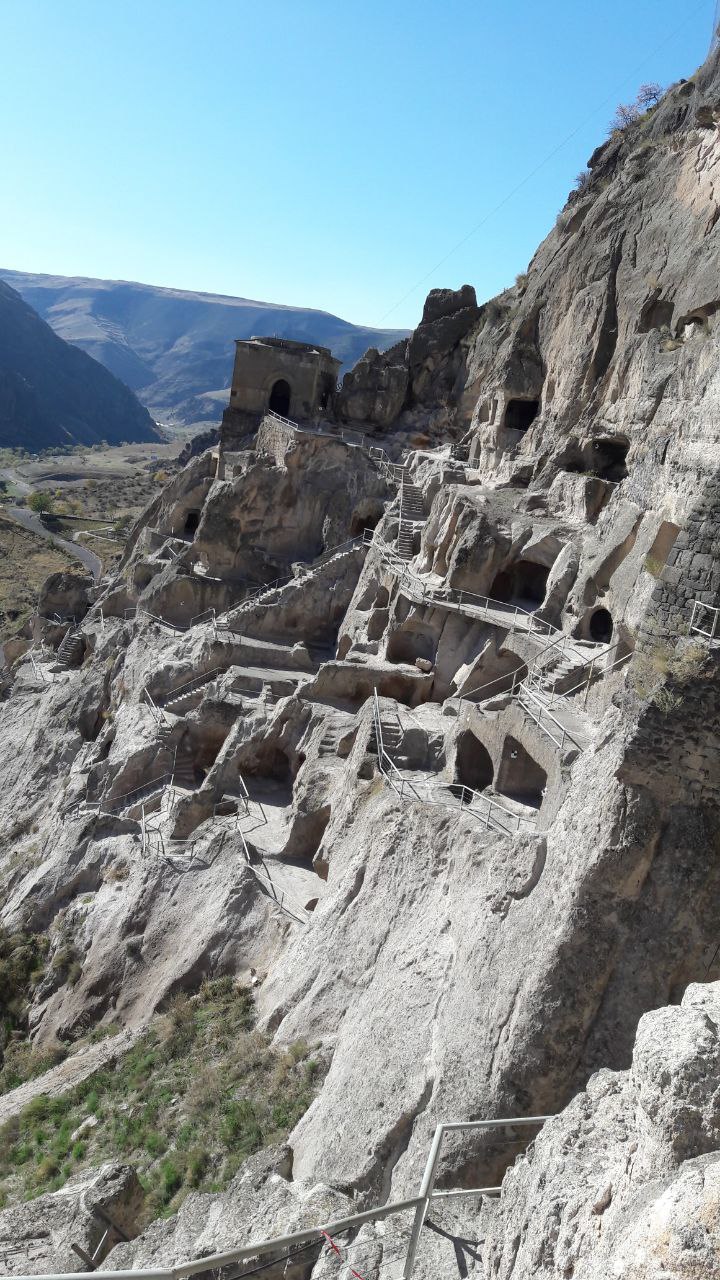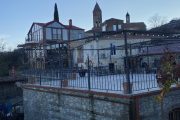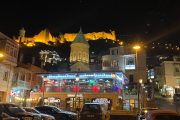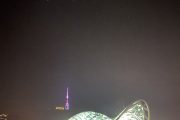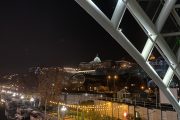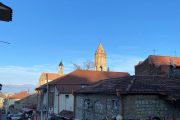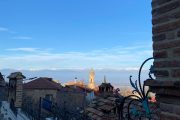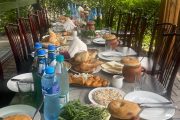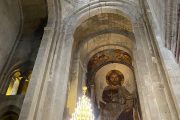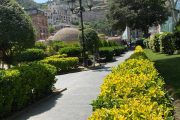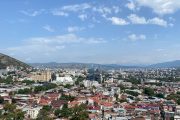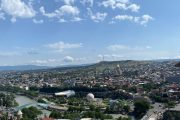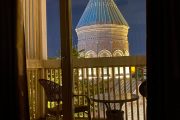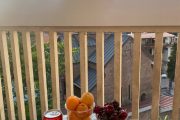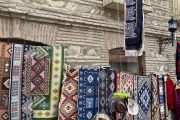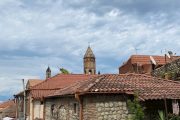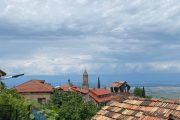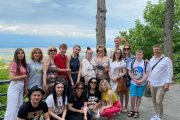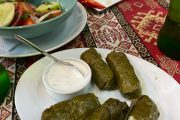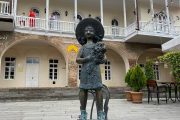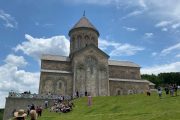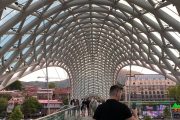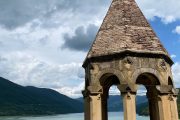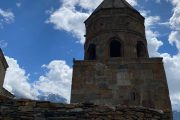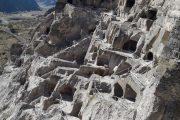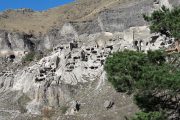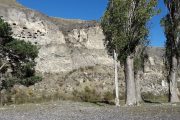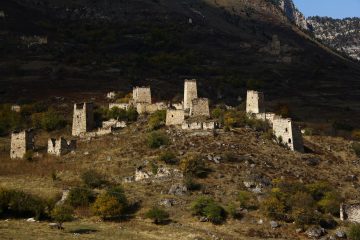Departure from Nalchik at midnight to Tbilsis through Vladikavkaz about 300 km (we pick up those who wish to join from Vladikavkaz along the way).
The border of the Russian Federation takes an indefinite time, passport control.
It is possible to purchase a tour with an independent arrival in Tbilisi with an additional charge for a meeting and transfer from Tbilisi airport.
Description
Day 1
Georgian border (passport control)
On the way to Tbilisi through the Georgian Military Highway, we will pass through: Daryal Gorge, Kazbegi village, Cross Pass, Gudauri ski resort.
- We stop at the Ananuri Fortress:
Ananuri Fortress is located right on the Georgian Military Highway, 12 km from the small town of Ananuri. The distance from it to Tbilisi is 66 km. The fortress was built at the mouth of the Vedzatkhevi river on the banks of the Aragvi. Now the Zhinvali reservoir is located here. As the best preserved landmark of that era, Ananuri is proposed for inclusion in the UNESCO list. - Zhinvali Reservoir: A very picturesque body of water surrounded by «velor» wooded mountains. Crystal clear turquoise water in which you can swim in summer. And from January to March, you can see unique pictures of an empty reservoir — the water level drops sharply and in some places you can even walk along the bottom.
Lunch for extra charge
Arrival in Borjomi
The city of Borjomi is a resort in the center of Georgia, famous throughout the post-Soviet space for its sources of healing mineral water. The name of the city has two Georgian roots: «borzh» — «fortress, wall» and «omi» — «war, battle». In ancient times, the city of Borjomi was a natural fortress, the walls of which were the mountains of the Caucasus. Holidays in Georgia in Borjomi, the prices of which are quite democratic, can be compared with all severity in terms of service level with a European health resort.
Check in at the hotel
- Tour around the Borjomi National Park. Borjomi Kharagauli National Park is a relict reserve in the northern part of the Lesser Caucasus in Georgia. This is a unique place that combines the beauty of virgin nature with a developed infrastructure that meets international standards. The territory of the park with an area of 76 thousand hectares covers the northern and southern slopes of the Adjara-Trialeti mountain range. A unique feature of the reserve is the diversity of natural landscapes — mountainous forests, blooming alpine valleys, turbulent rivers and clear lakes.
Dinner (included)
Free time
Day 2
Breakfast (included)
Departure with luggage from the hotel
Departure to the cave city of Vardzia
- Vardzia is a man-made cave city in the rock, about a kilometer long. It stretches along the Kura River and consists of 600 rooms harmoniously located on 8 floors. Libraries, pantries, bathhouses, first-aid posts, living rooms, chapels, as well as churches and the Assumption Church, which in the future will become the basis of the cave monastery of Vardzia, were once well equipped in these premises.
Lunch extra fee
Arrival in Akhaltsikhe
- Akhaltsikhe Fortress «Rabat Fortress». The fortress is the main attraction of the Georgian city of Akhaltsikhe or, if you call it correctly, the Akhaltsikhe fortress. It is located in a rather “passing” place among tourists, because is located halfway between the city of Borjomi and the ancient cave city-monastery Vardzia. The Akhaltsikhe fortress was founded in the 13th century, and from the 16th century it was under the rule of the Ottoman Empire, in the 19th century it came under the protection of the Russian Empire, and then returned to its rightful owners — the Georgians. Thus, the currents of different countries and cultures were connected in architecture. The fortress entered the 21st century in a very deplorable state.
Arrival in Tbilisi
Check in at the hotel
Free time
Day 3
Breakfast (included)
Tour start:
- Jvari Monastery — poet M.Yu. Lermontov wrote about it, is one of the most ancient temples in Georgia, which is included in the list of UNESCO World Heritage Sites.
- Mtskheta is the ancient capital and spiritual center of Georgia, a city that is 2500 years old. Mtskheta is an ancient city, the first capital of Georgia. The foundation of the city dates back to the fifth century BC. It can be said without exaggeration that the Georgian civilization was born here, as evidenced by the sights of Mtskheta.
- Svetitskhoveli Temple, aka The Cathedral of the Twelve Apostlesis the first and main temple in Georgia, whose name is traditionally translated as «life-giving pillar». This is one of the largest temples in the country and chronologically the first in Georgian temple history. It has existed in its modern form since 1010, not counting individual reconstructions.
Lunch (included)
Return to Tbilisi. Walking tour of the old city:
- Holy Trinity Cathedral —(Tsminda Sameba) — the main temple of Georgia and the highest church in Georgia and Tbilisi.
- Sioni Cathedral — In ancient times, there was a tradition in Georgia to name temples after the holy places of Jerusalem. One of these temples is the Cathedral of Sioni, repeating the name of the symbol of Jerusalem — the sacred Mount Zion. Prior to the construction of the Tsminda Sameba Cathedral (2004), Sioni was a patriarchal cathedral and was considered the main temple of Tbilisi and Georgia.
- str. Wine rise — An ancient path from the Avlabari Upland, where the Marneuli and Navtlug roads connected, to the Metekhi bridge. The ancient name of the area is Sirachkhana, in the 19th century the main city bazaar was located here, they sold wine.
- Bridge of Peace — Standing out against the background of the old buildings of the historical center of Tbilisi, over the river Mtkvari (Kura) there is a unique glass Bridge of Peace, connecting the two banks like two eras. On the one hand, the architecture of the past, on the other — a modern city.
- Park Rike (Europe Park)- is spread widely in the heart of the Old Town on the banks of the Kura River. It is an island of calm and serenity in the center of noisy Tbilisi, but at the same time you can not only walk slowly under the canopy of trees and enjoy the fresh air, greenery and silence, but also have fun on some of the many attractions.
- Let’s take the cable car up to the Narikala Fortress (4th century AD) — an ancient citadel in the historical part of Tbilisi and one of the sights of the capital of Georgia. It is not exactly known when the stone fort was built on the hill, but in the 4th century, even before the foundation of the city, it existed under the name of Shuris-Tsikhe. It is believed that the Narikala fortress got its modern name under the Mongols. «Narin-Kala» means «small fortress». For many centuries, no one managed to take the fortress by battle. The powerful citadel rises on one of the spurs of Mount Mtatsminda — Narikala Hill, which is part of the Sololak Range. Translated from the Georgian language «Mtatsminda» means «holy mountain». The mountain rises above Tbilisi on the right bank of the Kura, almost in the center of the city. It dominates the entire urban development and is one of the symbols of Tbilisi.
- Waterfall in the Fig Gorge— the picturesque Legvtakhevi (Fig Gorge) Gorge is located in the very center of Tbilisi, in the Abanotubani district. The gorge begins at the Orbelian bath and ends with a waterfall, which forms the Tsavkisistskali river, which flows through the Botanical Garden. During the presidency of Mikhail Saakashvili, this place was equipped, footpaths were made here, and at present the gorge is one of the most visited places in the Georgian capital by tourists. Thousands of people come here every day.
- Sulfur baths— The sulfur baths of Tbilisi are one of the most important sights of the capital. In fact, these are ordinary public baths, their only feature is that the water in them comes from underground, from sulfur sources — warm and with a characteristic smell of hydrogen sulfide. By the way, rest and treatment in Georgia go hand in hand, many resorts have some kind of healing springs.
- Metekhi Temple — The hallmark of Tbilisi is the Metekhi Temple. It seems to grow out of a huge rock on the banks of the Kura. Spread over the river, the temple silently looks at Meidani Square and the city itself, at modern people and carefully stores somewhere in its very depths all those memories and pictures from the past that it had to endure.
- Mosque — The Shiite mosque, which was also commonly called the Blue or Tatar mosque, was erected in 1524 on a high rocky bank of the Mtkvari River not far from the ancient Metekhi church of the 13th century. The mosque was founded at the request of the famous Persian Shahinshah, poet and military leader from the Safavid dynasty Ismail I.
- Monument to Vakhtang Gorgasali — a monument to the founder of Tbilisi Vakhtang Gorgasali was erected relatively recently — in 1970. It blends so seamlessly into the landscape that it is impossible to imagine the city without it. The monument is set on a rock on the banks of the Kura River near the Metekhi temple. This neighborhood is not accidental — it was Vakhtang who first strengthened the faith of the Georgian people, built churches and monasteries. And now King Vakhtang stands and overshadows Tbilisi, the main square of the old city of Meydan, and protects this holy land from enemies.
- str. Shardeni —The street and the district got their names in honor of the French traveler Jean Chardin, who visited Tbilisi in the 19th century on a Catholic mission and colorfully described the city in his notes. Now the Shardeni district is a kind of analogue of the Moscow «Red October» — such a concentration of bars, clubs and other similar establishments is not found anywhere else in the city. But here, too, creative Georgian sculptors were noted — in general, extraordinary sculpture in the most unexpected places can be considered almost a hallmark of the center of Tbilisi.
- Rezo Gabriadze Puppet Theater —The clock tower near the Puppet Theater in Tbilisi appeared only a year and a half ago, but it seems that it has always been there, it fits very organically and unmistakably into the architecture of the old street.
Return to hotel, free time
Day 4
Breakfast (included)
Free time:
You will have the opportunity to once again walk along these historical narrow streets, drink tea or coffee with Adjarian khachapuri, purchase all kinds of souvenirs (magnets, key rings, postcards, figurines). And most importantly, bring your loved ones delicious Georgian greetings — Churchkhela, wine, spices.
12:00 Check-out
Visit Tbilisi Mall.
Tbilisi Mall is the largest shopping center in the South Caucasus. Prices are average and generally do not differ for goods in similar shopping centers in Tbilisi, and of similar quality. You can find here such brands as: KOTON, ZARA, BERSHKA, CORSO ITALIA, DEFACTO, FERRO, MASSIMO DUTTI, MAVI, STRADIVARIUS and many others.
At 16:00, the group leaves for home.
Tour price includes:
Travel by minibus tour class;
Excursion service according to the tour program with a qualified guide;
Accommodation in Borjomi (1 night);
Accommodation in Tbilisi (2 nights);
Breakfasts;
Lunch in Mtskheta;
Dinner in Borjomi;
Ticket to the cave city of Vardzia;
Ticket to Akhaltsikhe «Rabat Fortress»;
Cableway in Tbilisi 1 one-way ticket.
Additional charge:
lunches and dinners;
personal expenses.
| PRICE | 16’000 rubles per person | |||||||
| DURATION | 4 days / 3 night | |||||||
| AMOUNT IN THE GROUP | from 6 pax | |||||||
| INCLUDED IN THE PRICE |
|
|||||||
| ADDITIONALLY PAID |
|
|||||||
| You must have all needed documents — passport and visa on necessity. Important to know! If weather conditions are unfavorable for the tour, then changes to the planned route are possible, including the day and time of departure. |
||||||||
Booking
SERVICES
| Travel by minibus tour class | |
| Accommodation in the center of Tbilisi (in the Old Town) hotel 3* for 2 nights | |
| Accommodation in Borjomi in hotel 1 night | |
| Breakfasts | |
| Lunch in Mtskheta and dinner in Borjomi | |
| Cableway in Tbilisi | |
| Excursion service according to the tour program with a qualified guide | |
| Tbilisi sightseeing tour | |
| Trip to Mtskheta, Jvari Monastery, Borjomi, Vardzia | |
| COST | 16 000 rubles. |
ADDITIONAL EXPENSES:
- lunches and dinners
- Personal expenses


 +7 928 691 44 05
+7 928 691 44 05 
 Russia, KBR, city Nalchik
Russia, KBR, city Nalchik




